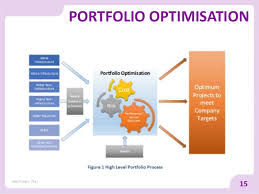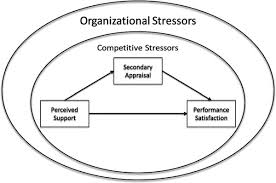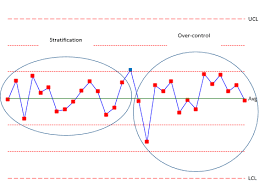
Cola Wars Continue: Coke and Pepsi 2010
Order Instructions:
1. HR Analysis
a) As Coke and Pepsi move forward from this point, are there any important human resource issues that should be considered as part of their corporate and business strategies?
SAMPLE ANSWERS
Cola Wars Continue: Coke and Pepsi 2010
Introduction
Pepsi and Coke have dominated the carbonated soft drinks (CSD) market since the founding of the companies in 1889 (Coke) and 1898 (Pepsi-Cola) with stiff competition between them as they tried to become market leaders in the beverages market. However, the competition between the two companies is taking a new direction as they realize that the future lies not only in selling more products, but more so in having the right people on their team. The two companies are looking for new ways to boost their HR so that they can secure their present and future prospects.
Future HR practices
Crucial HR issues
The future of HR will be greatly impacted by some current issues such as finding the right talent for the complex tasks related to international beverage marketing and production given the stiff competition within the industry. Once the companies have found and selected the people with the right skills and capabilities, the next step is to ensure that they stay committed to their roles within the global corporations, which can be best achieved through giving meaning to their contribution within the organization. Companies are also struggling to reshape their identities through their people and not just their products as it was in the past, which means that they are investing more resources in their people now than ever before (Accenture, 2014). It is also crucial that companies have the right leaders who understand and believe in the values of the company and are focused on doing the right things that move the company closer to achieving its mission. HR professionals are crucial in this process as they work with line managers in efforts to ensure that they deliver on their mandate through nurturing talent, promoting the right culture and through delivery of transformational leadership.
Dealing with generational diversity
The current marketplace is composed of about three to four generations of workers with baby-boomers being the oldest group and generation Y being the youngest of the working generations, which poses a difficult challenge for HR professionals as all these groups of workers have different needs (Boudreau, Gibson & Ziskin, 2014). This challenge will still be present even in the future as the millennials start joining the workforce and as such, HR should come up with proper strategies to accommodate both the younger workers and the older workers as well. What is becoming clearer is that the younger generations are more adventurous than the older generations and as such, they do not want to be restricted by the old workplace rules. This trend has forced HR professionals to rethink how best they can accommodate them, yet at the same time increase the efficiency of operation and not lose out on productivity. Technology is also an important aspect of the lives of the younger generation as they are constantly on social media where they network and chat with friends, which might be quite detrimental to their productivity at work. HR professionals in coordination with line managers should work hand in hand to ensure that workers do not spend time on social media while on company time.
The workforce of one
This trend is gaining popularity among HR practitioners as they grapple with the diverse needs of their employees having realized that each employee has unique needs and it is no longer viable to treat the workforce as a single homogenous unit, but focus should be on individuals and their needs. This means that each employee is treated as a workforce in himself and his needs are addressed individually, but in accordance with the organizations culture. This trend has emerged out of the need to retain their talent for as long as possible given the prohibitive costs incurred in training such talent, especially those in top positions or those highly skilled professionals. Companies are finding it harder to keep replacing their talented employees who are being poached by other companies whether they are competitors or even companies from different industries. In the global marketplace where both Pepsi and Coke operate, there is stiff competition between international corporations and the number of professionals who understand the global marketplace and how to achieve the best results for companies is limited, which is driving the move towards talent retention and training.
The extended workforce
As both Pepsi and Coke operate globally, the need to use an extended workforce is increasing and will keep rising as more franchises are created where it is more efficient to use contractors instead of full-time employees of the company. The use of contractors is usually a good move for the company as it narrows down on employee administration tasks as the company only has to deal with the contractor and not his entire workforce, which saves time for the company, but may be detrimental in the long run. Most of the contracted workers are usually manual laborers who are employed in the bottling plants and manufacturing facilities of the company, without close supervision of the contractors activities most contractors have been known to underpay their workers. Therefore, it is vital that both companies set HR standards for their outside contractors and have an oversight team, which monitors the activities of contractors and ensures that the working conditions of manual laborers and their wages are commensurate with those stipulated by the companies. The companies should not forget to monitor the skilled professional who they contract in order to ensure that their work meets the set standards.
Integrating talent management activities
For global corporations such as Coke and Pepsi there is nothing more important than managing the careers of talented professionals who contribute greatly to the key strategies that move the company forward in the highly competitive global food and beverage industry. One of the key talent management strategies is through training of employees on the key skills required to work in the corporation and also providing guidance on how these individuals could move up the ladder within the organization. This need for talent retention has seen both companies launch management trainee program that prepare young graduates for top management positions within the company through training them on all aspects of the companies’ operations so that they understand exactly how the company operates. This means that the trainees get to spend significant amounts of time within the various departments in the organization and they are in daily contact with line managers to get a deeper understanding of not only how the department operates, but also to understand the key managerial challenges in each department. These programs are working extremely well, but more needs to be done in refining the programs for future challenges.
Conclusion
The above HR issues and trends are crucial to both Pepsi and Coke as they strive to continue being market leaders in the food and beverages industry against a backdrop of stiff competition from new entrants and the rapidly changing technological environment. HR practitioners within these two companies have to implement all the strategies analyzed above in order to stay competitive and ensure that they retain the right talent within their organization, as this is the key to a profitable future for both companies. Finally, as the HR function transforms in the global environment, HR practitioners will also need to invest time in learning new skill that will increase their effectiveness in future.
References
Accenture. (2013). The future of HR. Retrieved from http://www.accenture.com/us-en/Pages/insight-future-of-hr.aspx
Boudreau, J., Gibson, C. & Ziskin, I. (2014, January 5). What is the future of HR? Retrieved from http://www.workforce.com/articles/20179-what-is-the-future-of-hr
We can write this or a similar paper for you! Simply fill the order form!












